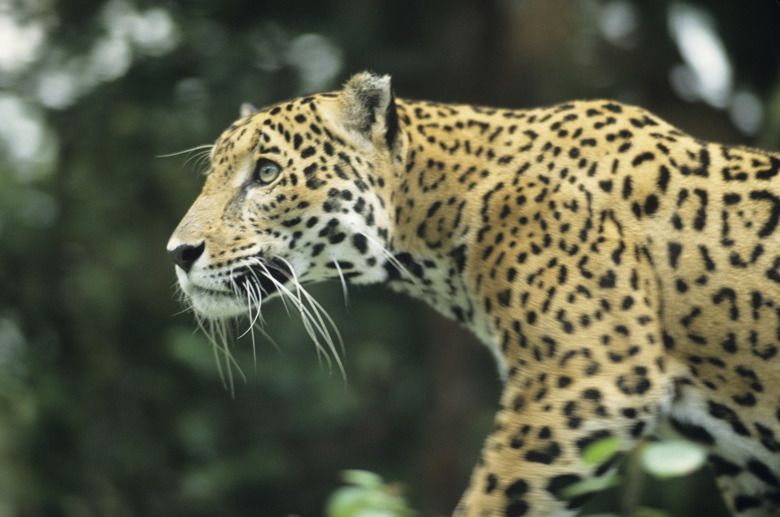Heterotrophs & Autotrophs In The Tropical Rainforest
Tropical rainforests are the most widespread type of forest in the world, found mainly around the equator and often receiving more than 100 inches of precipitation in a year. Rainforests are home to a rich diversity of plants and animals falling into two main categories: autotrophs and heterotrophs. Autotrophs are organisms that can produce their own food by consuming inorganic substances (sunlight, minerals, water), while heterotrophs are incapable of converting inorganic material to energy on their own, and must consume other plants and animals.
Autotrophs
Autotrophs
Plants that convert sunlight into energy through photosynthesis are classic autotrophs, and due to the moist, warm climate a huge diversity of plants are found in tropical rainforests. In the tropical rainforest of Monteverde, Costa Rica, for example, scientists have discovered over 500 species of orchids alone. Some autotrophic plants have adapted over thousands of years to life in dense rainforest canopies, never touching the ground — epiphytes or "air-plants" grow on the branches of tall trees in the canopy where they find more sunlight and moisture than on the rainforest floor.
Heterotrophs
Heterotrophs
Heterotrophs in a rainforest include mammals such as primates, sloths and jaguars, as well as many species of reptiles and amphibians. Half the world's animal species are found in tropical rainforests, according to the Rainforest Action Network, from the tiny Maues marmoset, a kind of monkey found on only a few acres of Amazonian jungle, to the dangerous poison arrow frog whose skin produces one of the most toxic poisons in nature.
Invertebrates
Invertebrates
By far the most abundant heterotrophs found in tropical rainforests are insects and other invertebrates, with scientists estimating more than 50 million species can be found in rainforests worldwide. Ants are especially diverse in tropical rainforests — one study in Peru counted more than 50 different ant species on a single tree. Species like the leaf-cutter ant live in social colonies that carve out ant-highways along the forest floor. They harvest vegetation which they use to grow a particular fungus which they in turn use as food.
Heterotrophic Plants
Heterotrophic Plants
Some rainforest plants have evolved as heterotrophs as well, like the parasite Rafflesia arnoldi that taps into the roots of other plants to steal their nutrients. Other plants will consume decaying plant or animal matter instead of performing photosynthesis. Called saprophytes, these plants fill the valuable ecosystem role of recycling nutrients within the tropical rainforest, and they include some species of orchid that live off of dead animals.
Cite This Article
MLA
Echolls, Taylor. "Heterotrophs & Autotrophs In The Tropical Rainforest" sciencing.com, https://www.sciencing.com/heterotrophs-autotrophs-tropical-rainforest-23141/. 9 March 2018.
APA
Echolls, Taylor. (2018, March 9). Heterotrophs & Autotrophs In The Tropical Rainforest. sciencing.com. Retrieved from https://www.sciencing.com/heterotrophs-autotrophs-tropical-rainforest-23141/
Chicago
Echolls, Taylor. Heterotrophs & Autotrophs In The Tropical Rainforest last modified August 30, 2022. https://www.sciencing.com/heterotrophs-autotrophs-tropical-rainforest-23141/
